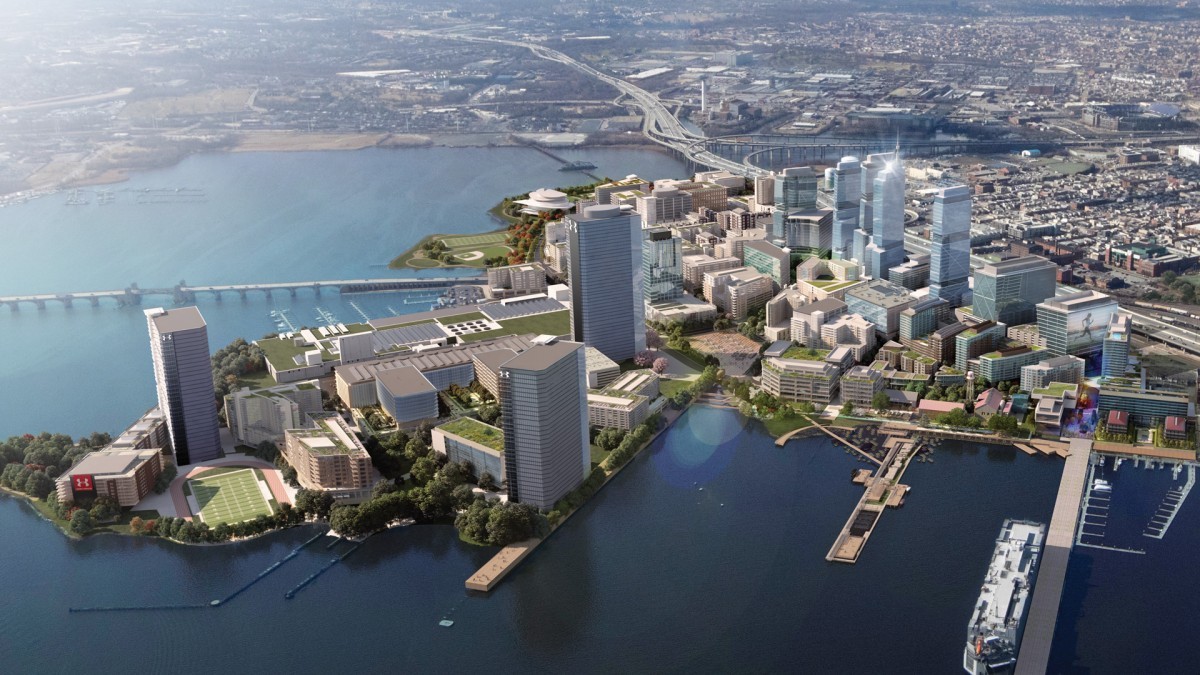
On Wednesday, Sagamore Development announced that global investment firm Goldman Sachs would commit $233 million to the Port Covington redevelopment. The 235-acre, mixed-use project on Baltimore’s waterfront is a move that Goldman Sachs’ Urban Investment Group (UIG) has been eyeing since 2016.
“This is not only an opportunity to invest in infrastructure and lay down the framework for what will be millions of square feet and dozens of buildings, said managing director for Goldman Sachs UIG Margaret Anadu, “but do so in a way that’s really going to benefit Baltimore residents.”
The $660 million tax increment funding (TIF) that Sagamore received last year from the city is cited as a key factor in the UIG’s decision to invest. Anadu said the TIF signified the project was supported by the city and displayed strong public-private partnerships
“With the approval of the TIF, that said the city and state were behind this,” she said. “Then you have Sagamore as the quarterback—they are relentless.”
A key factor in the collaboration between the private and public sectors was the Community Benefits Agreement (CBA) signed last year between Sagamore, the city, and SB7—an organization that represents the South Baltimore communities of Brooklyn, Cherry Hill, Curtis Bay, Lakeland, Mt. Winans, Westport, and Port Covington. The agreement ensures that the communities in South Baltimore continue to thrive culturally, economically, educationally, and socially during the 20-year redevelopment process of Port Covington.
The $233 million investment will uphold the promise made in the CBA to invest in infrastructure—roads, utilities, and parks for the community—during all phases of the project. Goldman Sachs said they wouldn’t play a huge role in the planning process beyond the monetary impact.
“We will have a voice in the direction of the project,” Anadu said. “But we will primarily serve as investors, leaving day to day on-the-ground execution to the Sagamore team.”
Plank Industries CEO, Tom Geddes, said the project would bring thousands of new jobs to the city, nearly 1.5 million square feet of office and retail space, a 200-room hotel, and apartments.
Of the 235 acres, a portion will remain untouched during the redevelopment, and that includes Under Armour’s 50-acre headquarters, as well as City Garage, Nick’s Fish House, Sagamore Spirit Distillery, and the newly opened Rye Street Tavern.
“You won’t see a lot of activity on the site over the next 12-18 months,” Geddes says. “But there will be a tremendous amount of behind-the-scenes work on planning and design going on getting the site shovel ready.”
The prospects of this new investment have Mayor Catherine Pugh optimistic about the new partnership and what it means for the city’s residents.
“This investment, especially from such a prominent partner as Goldman Sachs, means more jobs, more opportunity and more economic growth for Baltimore City,” she said in a statement. “Investors are seeing what we already know about Baltimore—we’re a city on the rise, and an economic hub with a strong, diverse workforce.”
This move comes as Sagamore is in the process of drafting a proposal to Amazon to move a second headquarters to the Port Covington development. Last week, the online retail giant released a statement requesting bids for the new location by October 19. If selected, it would bring 50,000 new jobs and a $5 billion investment in office space to Baltimore.
“We think Port Covington would be a phenomenal location for Amazon,” Geddes said. “Having the vote of confidence of an institution like Goldman Sachs is nothing but helpful.”
Geddes is hopeful that the new partnership represents progress for Port Covington and delivers on the commitment made to bring outside investments to the city.
“We could not be happier that we have Goldman Sachs as our partner,” Geddes said. “It was important to us to find an equity partner that shared our common vision for urban economic growth, job creation, and local workforce development here in Baltimore City.”
